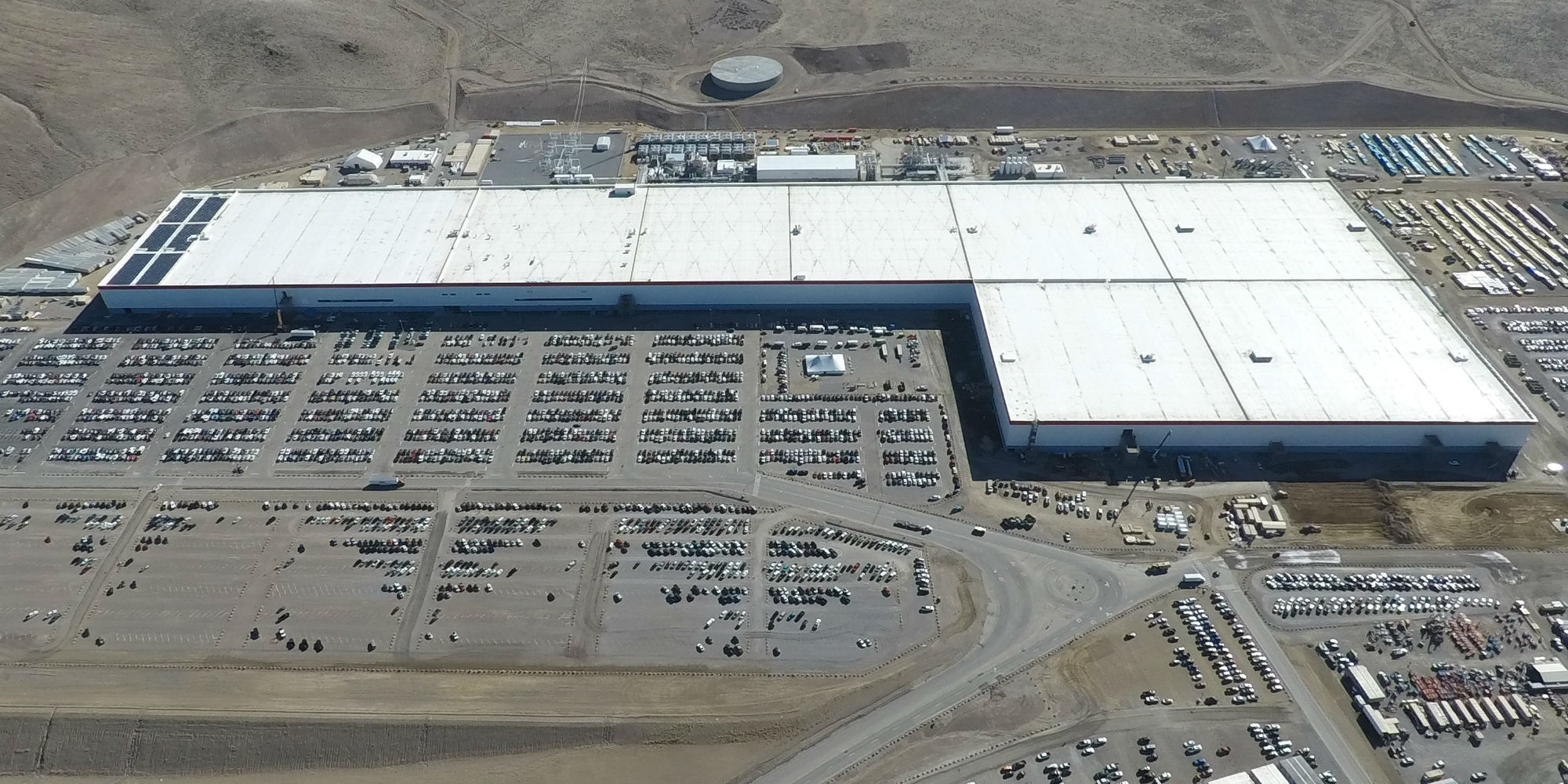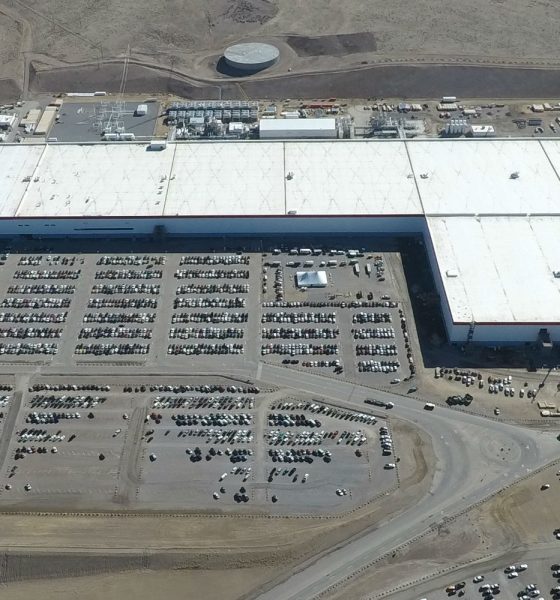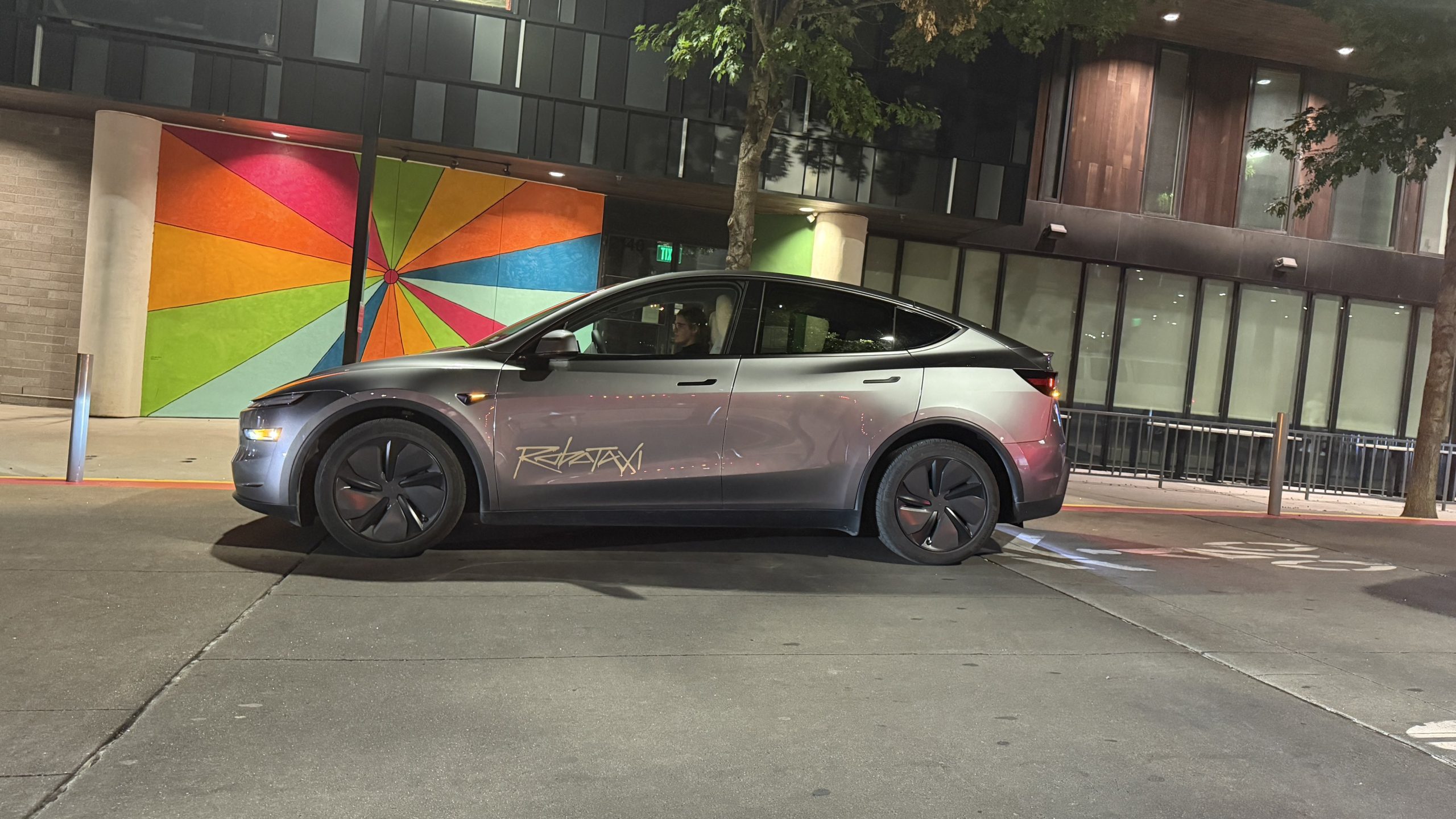

Investor's Corner
Tesla’s long-term play on batteries gets praise from German auto executive
When Elon Musk proposed his idea of building a Gigafactory to manufacture batteries for Tesla’s electric cars, many were skeptical. The company’s skeptics were quick to jump on the opportunity to criticize the daring venture, and even the MIT Technology Review noted in an April 2014 article that the project might “mostly be a clever negotiating tactic,” since Tesla could not guarantee enough demand for its vehicles to justify the construction of the massive facility (Tesla was only selling around 23,000 cars per year then).
Fast forward to the present, and Tesla’s long-term play on Gigafactory 1 is starting to pay off. The Model 3, an incredibly successful electric sedan that sold over 145,000 units in the SUV and pickup truck-dominated North American market in 2018, is being prepared for an international ramp. Tesla also stands as the most notable electric car maker that produces its own battery cells. Behind these advantages and milestones are Gigafactory 1’s battery production capabilities, which achieved an annualized run rate of 20 GWh last year.
For BMW Deputy Chairman of the Supervisory Board Manfred Schoch, Tesla’s long-term play on electric car batteries was a strategic decision. In a recent interview with German publication Manager Magazin, the BMW executive remarked that Tesla’s high investments for Gigafactory 1 are well-spent. Schoch also praised Elon Musk’s decision to closely collaborate with Panasonic early on to produce batteries at a large scale.
“Tesla controls the entire value chain; they understood electromobility,” the BMW executive said.
Schoch, who also serves as the Chairman of the Munich Works Council and the European Works Council, has decades of experience in the auto industry. Joining BMW in 1980 as a trainee, he later became the automaker’s works council chairman in 1987, where he gained a reputation as a working time expert. During his tenure with BMW, he introduced a wide variety of working time models, even introducing initiatives to make working hours more flexible for the company’s workforce. As such, Schoch is quite familiar with large-scale projects that enhance efficiency in the long-term.
In his recent interview, Schoch ultimately called on BMW’s executives to explore the idea of producing the company’s own battery cells for its upcoming electric cars. Candidly addressing his concerns, Schoch stated that BMW’s board members would probably benefit from working with Elon Musk, especially since the auto industry has developed a tendency to declare some otherwise important ideas as impossible.
“Our board members should finally deal more intensively with this gentleman, who should have been bankrupt by now. In the (auto) industry, too much is complained, and too much is declared impossible,” the BMW executive said.
Schoch’s statements on Tesla comes amidst Germany’s best year for electric vehicle sales yet. During 2018, figures from the German Federal Motor Transport Authority indicated an increase of 43.9% in EV sales. That’s more than 1% of the country’s total new passenger car sales. This increase comes amidst a steep dive in the sale of diesel-powered vehicles in Germany, which saw a decline from 38.8% to 32.3%.
EU Model 3 heading into SF Pier 80. Passed at least 4 other trucks on HW101. #Tesla $TSLA pic.twitter.com/2uI64Lk1Vh
— YunLinSJ (@YunLinSJ) January 8, 2019
Tesla, for its part, is preparing Europe for the arrival of the Model 3. Local reports suggest that Tesla is looking to ship 3,000 Model 3 to the European region starting February. Members of the Tesla community have shared images featuring trucks loaded with the electric sedan heading towards San Francisco’s Pier 80 as well.
Tesla has also begun rolling out dual-charge CCS Superchargers for the European region. When the company announced that the Model 3 would be getting a CCS port, Tesla noted that it would be “retrofitting our existing Superchargers with dual charge cables to enable Model 3, which will come with a CCS Combo 2 charge port, to use the Tesla Supercharger network.” The installation of the new “Model 3 Priority” CCS Superchargers, as well as the retrofitting of the existing network, is expected to continue in the months ahead.

Investor's Corner
Tesla analyst maintains $500 PT, says FSD drives better than humans now
The team also met with Tesla leaders for more than an hour to discuss autonomy, chip development, and upcoming deployment plans.

Tesla (NASDAQ:TSLA) received fresh support from Piper Sandler this week after analysts toured the Fremont Factory and tested the company’s latest Full Self-Driving software. The firm reaffirmed its $500 price target, stating that FSD V14 delivered a notably smooth robotaxi demonstration and may already perform at levels comparable to, if not better than, average human drivers.
The team also met with Tesla leaders for more than an hour to discuss autonomy, chip development, and upcoming deployment plans.
Analysts highlight autonomy progress
During more than 75 minutes of focused discussions, analysts reportedly focused on FSD v14’s updates. Piper Sandler’s team pointed to meaningful strides in perception, object handling, and overall ride smoothness during the robotaxi demo.
The visit also included discussions on updates to Tesla’s in-house chip initiatives, its Optimus program, and the growth of the company’s battery storage business. Analysts noted that Tesla continues refining cost structures and capital expenditure expectations, which are key elements in future margin recovery, as noted in a Yahoo Finance report.
Analyst Alexander Potter noted that “we think FSD is a truly impressive product that is (probably) already better at driving than the average American.” This conclusion was strengthened by what he described as a “flawless robotaxi ride to the hotel.”
Street targets diverge on TSLA
While Piper Sandler stands by its $500 target, it is not the highest estimate on the Street. Wedbush, for one, has a $600 per share price target for TSLA stock.
Other institutions have also weighed in on TSLA stock as of late. HSBC reiterated a Reduce rating with a $131 target, citing a gap between earnings fundamentals and the company’s market value. By contrast, TD Cowen maintained a Buy rating and a $509 target, pointing to strong autonomous driving demonstrations in Austin and the pace of software-driven improvements.
Stifel analysts also lifted their price target for Tesla to $508 per share over the company’s ongoing robotaxi and FSD programs.
Investor's Corner
Tesla wins $508 price target from Stifel as Robotaxi rollout gains speed
The firm cited meaningful progress in Tesla’s robotaxi roadmap, ongoing Full Self-Driving enhancements, and the company’s long-term growth initiatives.

Tesla received another round of bullish analyst updates this week, led by Stifel, raising its price target to $508 from $483 while reaffirming a “Buy” rating. The firm cited meaningful progress in Tesla’s robotaxi roadmap, ongoing Full Self-Driving enhancements, and the company’s long-term growth initiatives.
Robotaxi rollout, FSD updates, and new affordable cars
Stifel expects Tesla’s robotaxi fleet to expand into 8–10 major metropolitan areas by the end of 2025, including Austin, where early deployments without safety drivers are targeted before year-end. Additional markets under evaluation include Nevada, Florida, and Arizona, as noted in an Investing.com report. The firm also highlighted strong early performance for FSD Version 14, with upcoming releases adding new “reasoning capabilities” designed to improve complex decision-making using full 360-degree vision.
Tesla has also taken steps to offset the loss of U.S. EV tax credits by launching the Model Y Standard and Model 3 Standard at $39,990 and $36,990, Stifel noted. Both vehicles deliver more than 300 miles of range and are positioned to sustain demand despite shifting incentives. Stifel raised its EBITDA forecasts to $14.9 billion for 2025 and $19.5 billion for 2026, assigning partial valuation weightings to Tesla’s FSD, robotaxi, and Optimus initiatives.
TD Cowen also places an optimistic price target
TD Cowen reiterated its Buy rating with a $509 price target after a research tour of Giga Texas, citing production scale and operational execution as key strengths. The firm posted its optimistic price target following a recent Mobility Bus tour in Austin. The tour included a visit to Giga Texas, which offered fresh insights into the company’s operations and prospects.
Additional analyst movements include Truist Securities maintaining its Hold rating following shareholder approval of Elon Musk’s compensation plan, viewing the vote as reducing leadership uncertainty.
@teslarati Tesla Full Self-Driving yields for pedestrians while human drivers do not…the future is here! #tesla #teslafsd #fullselfdriving ♬ 2 Little 2 Late – Levi & Mario
Investor's Corner
Tesla receives major institutional boost with Nomura’s rising stake
The move makes Tesla Nomura’s 10th-largest holding at about 1% of its entire portfolio.

Tesla (NASDAQ:TSLA) has gained fresh institutional support, with Nomura Asset Management expanding its position in the automaker.
Nomura boosted its Tesla holdings by 4.2%, adding 47,674 shares and bringing its total position to more than 1.17 million shares valued at roughly $373.6 million. The move makes Tesla Nomura’s 10th-largest holding at about 1% of its entire portfolio.
Institutional investors and TSLA
Nomura’s filing was released alongside several other fund updates. Brighton Jones LLC boosted its holdings by 11.8%, as noted in a MarketBeat report, and Revolve Wealth Partners lifted its TSLA position by 21.2%. Bison Wealth increased its Tesla stake by 52.2%, AMG National Trust Bank increased its position in shares of Tesla by 11.8%, and FAS Wealth Partners increased its TSLA holdings by 22.1%. About 66% of all outstanding Tesla shares are now owned by institutional investors.
The buying comes shortly after Tesla reported better-than-expected quarterly earnings, posting $0.50 per share compared with the $0.48 consensus. Revenue reached $28.10 billion, topping Wall Street’s $24.98 billion estimate. Despite the earnings beat, Tesla continues to trade at a steep premium relative to peers, with a market cap hovering around $1.34 trillion and a price-to-earnings ratio near 270.
Recent insider sales
Some Tesla insiders have sold stock as of late. CFO Vaibhav Taneja sold 2,606 shares in early September for just over $918,000, reducing his personal stake by about 21%. Director James R. Murdoch executed a far larger sale, offloading 120,000 shares for roughly $42 million and trimming his holdings by nearly 15%. Over the past three months, Tesla insiders have collectively sold 202,606 shares valued at approximately $75.6 million, as per SEC disclosures.
Tesla is currently entering its next phase of growth, and if it is successful, it could very well become the world’s most valuable company as a result. The company has several high-profile projects expected to be rolled out in the coming years, including Optimus, the humanoid robot, and the Cybercab, an autonomous two-seater with the potential to change the face of roads across the globe.
@teslarati Tesla Full Self-Driving yields for pedestrians while human drivers do not…the future is here! #tesla #teslafsd #fullselfdriving ♬ 2 Little 2 Late – Levi & Mario








